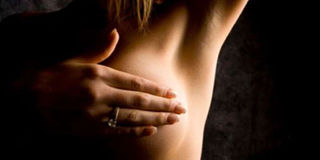Anatomy of the female breast

The breast is a body organ whose structure signifies its unique function of milk production. The male’s breast structure is almost similar to that of the female. However, the male breast tissue does not have specialized lobules because there is no physiologic need to produce milk. PHOTO | FILE
What you need to know:
- The success of breastfeeding is not determined by the size of nipples or breasts. The size of the breasts is a hereditary trait and is determined by the amount of fat cells a woman has. Normally, breasts increase in size during pregnancy and breastfeeding.
- The brain is greatly involved in release of hormones that cause milk ejection, thus it is normal for let-downs to happen in occasions such as when it is scheduled time for nursing, cry of another baby, or when a mother thinks about her baby.
The breast is a body organ whose structure signifies its unique function of milk production. The male’s breast structure is almost similar to that of the female. However, the male breast tissue does not have specialized lobules because there is no physiologic need to produce milk.
Medically, breasts are referred to as mammary glands. They are positioned and attached on the front of the chest muscles. The breast does not have muscle tissue. It is composed of lobules and glandular structures that are responsible for producing milk in females when they become stimulated. The lobules usually drain into a system of small tubes called ducts that carry milk to the nipples. These small ducts connect into large ducts and finally leave the skin into the nipple. The nipple is surrounded by dark skin called areola.
There are connective and fat tissues located in between ducts and glandular tissue.The amount of fat in the breast determines its size. Connective tissue together with ligaments gives support and shape to the breast. The breast also has lymph vessels, blood vessels, lymph nodes and nerves. Nerves give sensation to the breast.
The part of the breast that produces milk is arranged into sections referred to as lobes. An adult woman has about 15-20 lobes in every breast. In each lobe, there are smaller structures known as lobules, where milk production takes place.
BRAIN FUNCTION
Breast tissue starts to form in the foetus. All through childhood years, girls have immature breast tissue. When they reach puberty, production of hormones by the pituitary gland and ovaries causes growth of the breasts. This makes the milk ducts to stretch out and divide further, and then the breast tissue develops into a mature structure of ducts and lobules. Although the breasts become mature after adolescence, the breast tissue is not active until pregnancy when lobules grow and start producing milk.
The success of breastfeeding is not determined by the size of nipples or breasts. The size of the breasts is a hereditary trait and is determined by the amount of fat cells a woman has. Normally, breasts increase in size during pregnancy and breastfeeding. Breastfeeding is a process of demand and supply whereby the more the baby sucks, the more milk is produced. When the baby is breastfeeding, the action of the tongue and jaw pressing down on the milk sinuses causes suction. This results into milk flowing from the breast into the baby’s mouth.
When the baby suckles the nerve endings in the areola and nipple become stimulated. This sends signals to the pituitary gland in the brain to release hormones oxytocin and prolactin. Prolactin causes the intake of nutrients by alveoli and changes them into breast milk. On the other hand, oxytocin causes the cells in the alveoli to contract hence ejecting milk down to the milk ducts. This is referred to as let-down reflex.
A mother can experience let-down in various ways i.e. the baby starts to vigorously suck and swallow milk, milk may start dripping from the opposite breast, or there may be a feeling of full sensation or tingling. Other let-downs may occur when breastfeeding and may be noticeable or not. This is because the brain is greatly involved in release of hormones that cause milk ejection, thus it is normal for let-downs to happen in occasions such as when it is scheduled time for nursing, cry of another baby, or when a mother thinks about her baby.
Several factors like emotional stress, fatigue and breast problems like engorgement can interfere with let-down. Therefore ensure to nurse in a relaxed atmosphere and have any breast problems resolved on time.




